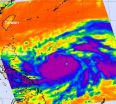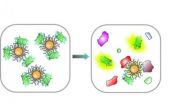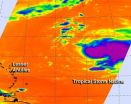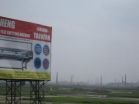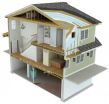(Press-News.org) Montreal, September 13, 2012 – Share and share alike is a concept we all learn as youngsters. Of course, when it comes to something as personal – and expensive – as a car, sharing's not so easy. Due to rising fuel costs hitting hard, increased concerns about the environment and overcrowded cities, car-sharing services like Communauto are becoming a popular way to get around. Can they be more popular still?
Researchers from the Concordia Institute of Information Systems Engineering can answer this question with a resounding "yes." They have piloted a computer model that can help determine how a car-sharing service can grow, maximize customer satisfaction and be profitable.
"Given car-sharing's goal of reducing congestion and carbon emissions, our work represents a potential boost to environmental sustainability," explains Anjali Awasthi. The assistant professor in the Faculty of Engineering and Computer Science came to Concordia in 2008 after spending many years researching car-sharing services in Europe.
"I wanted to apply the lessons I'd learned overseas to the Montreal region," recalls Awasthi, who was quick to enlist the help of her master's student, Ahmed Al Fassi. They turned to local car-sharing company, Communauto. Founded in 1994, the Montreal-based organization is the oldest of its kind in North America. The company is now poised to make tracks in Europe with its recent acquisition of French car-sharing company, Mobizen. The new expansion could mean up to 4,000 new Communauto cars on the streets of Paris, making this Concordia study particularly timely.
Awasthi and Al Fassi assessed which areas had the greatest growth potential in Montreal, based on factors like population density and customers' proximity to existing stations. They focused on data from Communauto for one particular area – the borough of Verdun. They then simulated the response to various growth scenarios to measure the potential impact on the level of activity at each station, the level of activity among the service's members, and the availability of cars to meet customer demand.
The researchers' model can test hundreds of different scenarios and evaluate their respective performances. It can help predict the best strategy for car-sharing growth in any given location, be it increasing the number of vehicles at one station, merging stations, or opening a new station entirely.
For Communauto, the scholarly research was a great boost. "The expertise and input of Professor Awasthi and Ahmed Al Fassi allowed us to improve the analysis necessary to determine our growth strategy," says Communauto's director of development and public relations, Marco Viviani. "This was the first step that we hope will lead to a long-term collaboration, which will be particularly helpful as we grow into new markets overseas."
Awasthi is now collaborating on another study with Communauto, funded by the Natural Sciences and Engineering Research Council. This time her focus has switched from the stations to the car fleet itself, and she'll be identifying possible ways to deploy vehicles more efficiently.
###Rewarding research: The paper authored by Awasthi and Al Fassi was one of three selected as finalists in a competition run by the Canadian Operational Research Society. It was also published this year in the international journal Expert Systems with Applications.
Related links:
Concordia Institute of Information Systems Engineering: http://www.ciise.concordia.ca/
Department of Computer Science and Software Engineering: http://www.cs.concordia.ca/
Communauto: http://www.communauto.com/
Natural Sciences and Engineering Research Council: http://www.nserc-crsng.gc.ca/index_eng.asp
Source:
Cléa Desjardins
Senior Advisor, External Communications
Concordia University Media Relations
Phone: 514-848-2424, ext. 5068
Cell: 514-909-2999
Email: clea.desjardins@concordia.ca
Web: concordia.ca/now/media-relations
Twitter: twitter.com/CleaDesjardins
Sharing the research on car-sharing
Researchers help develop strategy for smart growth of popular service
2012-09-14
ELSE PRESS RELEASES FROM THIS DATE:
Do SAT scores help or hurt in decisions about who will do well in college?
2012-09-14
Every year, nervous high school juniors and seniors, clutching #2 pencils and armed with hours of test preparation, sit down and take the SAT. At their most basic, these tests focus on verbal, math, and writing ability, and performance on these tests has been linked to subsequent academic performance. As a result, college admissions teams use SAT scores along with other information, such as high school grades, in choosing their incoming freshman classes.
It is perhaps no surprise, then, that the SAT has been the subject of much scrutiny. Some researchers have asserted ...
Kids with food allergies can fall through the cracks
2012-09-14
CHICAGO --- More can be done to properly manage the care of American children with food allergies, especially when it comes to diagnostic testing and recognizing non-visual symptoms of severe allergic reactions, according to a new Northwestern Medicine study.
"Every child with a food allergy should be diagnosed by a physician, have access to life-saving medication such as an epinephrine autoinjector and receive confirmation of the disease through diagnostic testing," said lead author Ruchi Gupta, M.D., an associate professor of pediatrics at Northwestern University Feinberg ...
Honestly? Just sign here -- first
2012-09-14
Toronto – Tax collectors and insurance agencies trying to boost honest reporting could improve compliance simply by asking people to sign their forms at the beginning instead of at the end.
That's because attesting to the truthfulness of the information before a form is filled out tends to activate people's moral sense, making it harder for them to fudge their numbers after, says a new paper.
"Based on our previous research we knew that an honour code is useful, but we were wondering how much the location mattered," says Nina Mazar, an assistant professor of marketing ...
NASA sees Sanba become a super typhoon
2012-09-14
Tropical Storm Sanba exploded in intensity between Sept. 12 and 13, becoming a major Category 4 Typhoon on the Saffir-Simpson Scale. NASA's Aqua satellite captured infrared data that showed a large area of powerful thunderstorms around the center of circulation, dropping heavy rain over the western North Pacific Ocean.
NASA's Aqua satellite passed over Super Typhoon Sanba on Sept. 13 at 0447 UTC (12:47 a.m. EDT). The Atmospheric Infrared Sounder (AIRS) instrument captured an infrared image of Sanba and found an eye about 20 nautical miles (23 miles/37 km) wide, surrounded ...
UMass Amherst chemists develop nose-like sensor array to 'smell' cancer diagnoses
2012-09-14
AMHERST, Mass. – In the fight against cancer, knowing the enemy's exact identity is crucial for diagnosis and treatment, especially in metastatic cancers, those that spread between organs and tissues. Now chemists led by Vincent Rotello at the University of Massachusetts Amherst have developed a rapid, sensitive way to detect microscopic levels of many different metastatic cell types in living tissue. Findings appear in the current issue of the journal ACS Nano.
In a pre-clinical non-small-cell lung cancer metastasis model in mice developed by Frank Jirik and colleagues ...
'Smart growth' strategies curb car use, greenhouse gas emissions, SF State study suggests
2012-09-14
A new study finds that smart growth approaches to urban planning could substantially reduce the number of miles that residents drive in a year. The research was published this week in The B.E. Journal of Economic Analysis and Policy.
Smart growth focuses on the development of compact, walkable cities with houses and jobs located close together. By shortening residents' commutes, this form of urban design aims to cut transportation-related energy use and greenhouse gas emissions. California is already pursuing smart growth in order to meet emissions reductions set by the ...
NASA sees wind shear battering Tropical Storm Nadine
2012-09-14
Tropical Storm Nadine is struggling against wind shear and some dry air. Infrared satellite imagery from NASA showed that Nadine's most powerful thunderstorms were being pushed east of the center.
NASA's Aqua satellite passed over Tropical Storm Nadine early on Sept. 13 and saw several factors that indicated the storm was still struggling to achieve hurricane status.
Infrared data from the Atmospheric Infrared Sounder (AIRS) that flies aboard Aqua found the strongest thunderstorms with very cold cloud temperatures (colder than -63F/-52C) were being pushed east of Nadine's ...
Warmer temperatures make new USDA plant zone map obsolete
2012-09-14
Gardeners and landscapers may want to rethink their fall tree plantings. Warming temperatures have already made the U.S. Department of Agriculture's new cold-weather planting guidelines obsolete, according to Dr. Nir Krakauer, assistant professor of civil engineering in The City College of New York's Grove School of Engineering.
Professor Krakauer developed a new method to map cold-weather zones in the United States that takes rapidly rising temperatures into account. Analyzing recent weather data, he overhauled the Department of Agriculture's latest plant zone map released ...
Researchers develop rapid method to measure carbon footprints
2012-09-14
Researchers have developed new software that can rapidly calculate the carbon footprints of thousands of products simultaneously, a process that up to now has been time consuming and expensive. The methodology should help companies to accurately label products, and to design ways to reduce their environmental impacts, said Christoph Meinrenken, the project's leader and associate research scientist at Columbia University's Earth Institute and Columbia Engineering. A new study, published online in the Journal of Industrial Ecology, describes the methodology.
The project ...
Home sweet lab: Computerized house to generate as much energy as it uses
2012-09-14
In a ribbon-cutting ceremony on Sept. 12, 2012, the U.S. Commerce Department's National Institute of Standards and Technology (NIST) unveiled a new laboratory designed to demonstrate that a typical-looking suburban home for a family of four can generate as much energy as it uses in a year. Following an initial year-long experiment, the facility will be used to improve test methods for energy-efficient technologies and develop cost-effective design standards for energy-efficient homes that could reduce overall energy consumption and harmful pollution, and save families money ...
LAST 30 PRESS RELEASES:
Maternal nativity, race, and ethnicity and infant mortality in the US
Migration-related trauma among asylum seekers exposed to the migrant protection protocols
Jupiter’s moon Europa has a seafloor that may be quiet and lifeless
SwRI upgrades nuclear magnetic resonance laboratory for pharmaceutical R&D
House sparrows in northern Norway can help us save other endangered animals
Crohn's & Colitis Foundation survey reveals more than 1/3 of young adults with IBD face step therapy insurance barriers
Tethered UAV autonomous knotting on environmental structures for transport
Decentralized social media platforms unlock authentic consumer feedback
American Pediatric Society announces Vanderbilt University School of Medicine as host institution for APS Howland Visiting Professor Program
Scientists discover first method to safely back up quantum information
A role for orange pigments in birds and human redheads
Pathways to net-zero greenhouse gas emissions for Southeast Asia
A JBNU–KIMS collaborative study on a cost-effective alloy matches superalloys for power plants and energy infrastructure
New study overturns long-held model of how plants coordinate immune responses.
New AI model predicts disease risk while you sleep
Scientists discover molecular ‘reshuffle’ and crack an 80-year-old conundrum
How stressors during pregnancy impact the developing fetal brain
Electrons lag behind the nucleus
From fungi to brain cells: one scientist's winding path reveals how epigenomics shapes neural destiny
Schizophrenia and osteoporosis share 195 genetic loci, highlighting unexpected biological bridges between brain and bone
Schizophrenia-linked genetic variant renders key brain receptor completely unresponsive to both natural and therapeutic compounds
Innovative review reveals overlooked complexity in cellular energy sensor's dual roles in Alzheimer's disease
Autism research reframed: Why heterogeneity is the data, not the noise
Brazil's genetic treasure trove: supercentenarians reveal secrets of extreme human longevity
The (metabolic) cost of life
CFRI special issue call for papers: New Frontiers in Sustainable Finance
HKU Engineering scholar demonstrates the smallest all-printed infrared photodetectors to date
Precision empowerment for brain "eavesdropping": CAS team develops triple-electrode integrated functional electrode for simultaneous monitoring of neural signals and chemical transmitters during sleep
Single-capillary endothelial dysfunction resolved by optoacoustic mesoscopy
HKU three research projects named among ‘Top 10 Innovation & Technology News in Hong Kong 2025’ showcasing excellence in research and technology transfer
[Press-News.org] Sharing the research on car-sharingResearchers help develop strategy for smart growth of popular service
